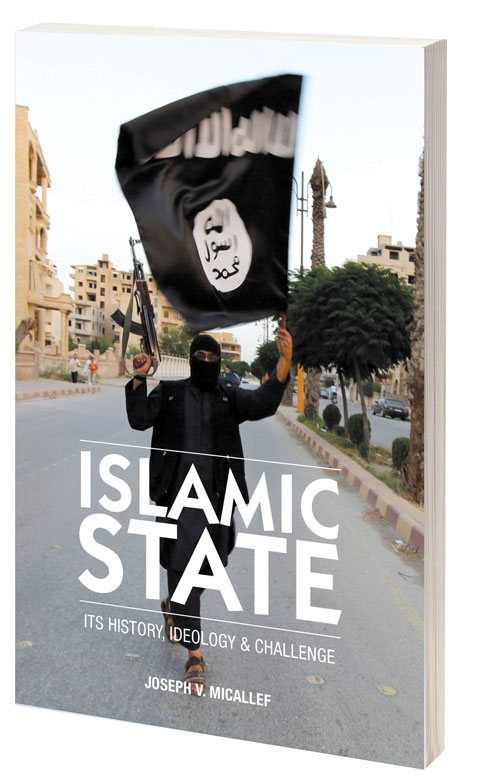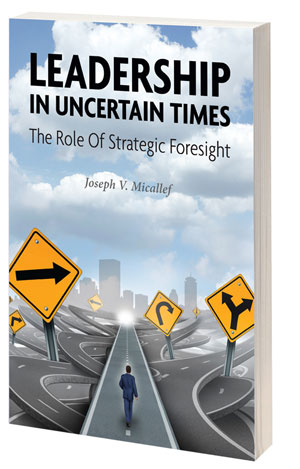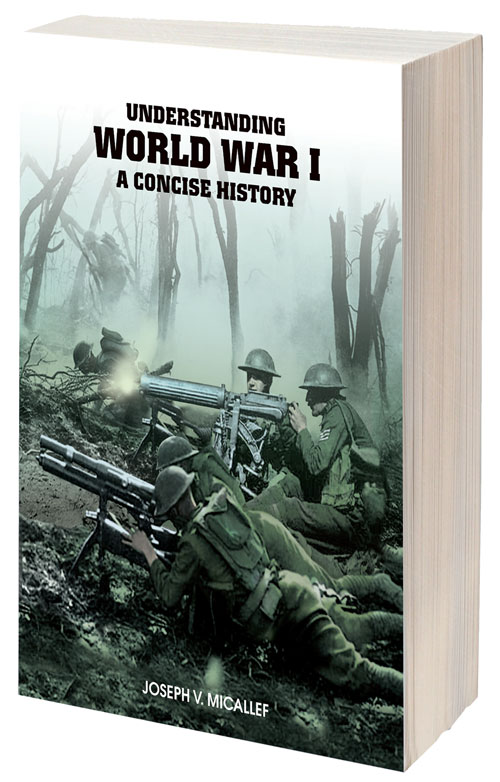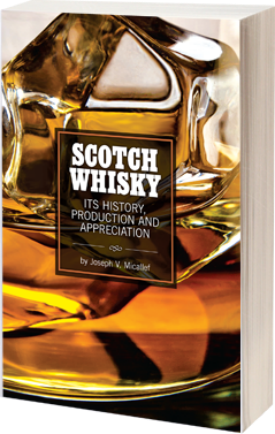Publications
Islamic State
Its History, Ideology and Challenge
The rise of the Islamic State (IS) has fundamentally altered the reality of the contemporary Middle East. Part radical jihadist and part revolutionary government, IS, in the space of eighteen months, has carved out a territorial domain comparable to that of Great Britain, with a population of over eight million people. Equally at home with cutting edge social media, while advocating a return to a more traditional Muslim society, it is rapidly transforming its domain into a twenty-first century reincarnation of a thirteenth century Islamic caliphate.
More
In the process IS has morphed into a political entity never before seen—a terrorist nation, complete with its own army, currency and passports—committed to a revolutionary strategy of creating a new Islamic caliphate in the historic lands of the Muslim Arab Empires of the ninth to the thirteenth centuries. This new caliphate, stretching from the Iberian Peninsula to the Indian subcontinent, is but a first step toward its declared strategy of a worldwide conquest that will ultimately lead to the Islamization of the globe.
It has amassed billions of dollars in assets, and what appears, at least on paper, to be a well-armed, formidable army. In the process, not only has it plunged both Syria and Iraq into civil war, but has made them the epicenter of a broader Sunni-Shia rivalry that threatens to plunge the Muslim world into a global conflict. Its unspeakable brutality, its genocidal policies, and its murderous record are unmatched by any regime since Pol Pot or Nazi Germany. Its rise has upended the traditional politics of the Middle East, creating tensions between long standing allies while making reluctant, if not surreptitious, allies of long standing rivals like the United States and Iran.
This collection of essays, most of which appeared in print during the winter of 2015, look at the origins of the Islamic State, its evolution from the jihadist group Tawhid and Jihad to, first, al-Qaeda in Iraq, then Islamic State in Iraq (ISI) followed by Islamic State in Iraq and al-Sham (ISIS), and finally Islamic State (IS). We will also look at its strategy and tactics during the Syrian and then the Iraqi civil war, and the implications of its rise on the contemporary Middle East.
This is not a book in the conventional sense as much as an ongoing “work in progress.” It is too early to write the definitive history of the Islamic State. There is little information available beyond what has been reported in the public media. Most intelligence agencies are still protecting their sources, both to maintain their relevancy, and also their safety. Interviews of individuals who have direct knowledge of events is often times impossible and, even when it is feasible, often times poses risks to both the interviewee and their interviewer. Moreover, the situation is sufficiently fluid and complex, that any “book” will quickly lose its relevancy. Instead it’s my intention to keep updating this work as the situation in the Middle East develops and as new facts come to life. A separate chapter on the ideology of jihadism and Islamic State will be added at a later date.
“Comprehensive, encyclopedic, insightful, strategic … a fascinating presentation that combines a mastery of Middle East history with a comprehensive understanding of contemporary international politics.” – Alisha K Hamel, LTC USARMY Executive Director, Historical Outreach Foundation
Less
Leadership in Uncertain Times
The Role of Strategic Foresight
In a world characterized by accelerating change and global interconnectedness, the future is increasingly opaque. Understanding and managing the risks associated with an uncertain future is one of the principal leadership challenges facing modern organizations. In Leadership in Uncertain Times: The Role of Strategic Foresight, Joseph V. Micallef explores how corporate leaders can identify the types of uncertainty they face and the risk mitigation strategies they can employ to reduce them. Among the topics covered is the role of management in creating an environment of strategic nimbleness, how CEO’s can encourage adaptability as a core value in a world of uncertainty and how Boards of Directors carry out their responsibilities for oversight and governance in an opaque future. Additional chapters examine the role and methodology of strategic foresight in dealing with an uncertain future, how military commanders deal with strategic uncertainty on the battle field and its lessons for business executives as well as the key macro trends that are shaping the twenty-first century.
Understanding World War 1
A Concise History
It started with a botched murder. By the time it ended, over 16 million people had lost their lives. Seventy million men took up arms; nine million of them never returned home. More than four times that number had been wounded. It was supposed to be the war to end all war. Instead, the Great War began a cycle of violence that would shape the twentieth century, bring about another world war within a generation, spawn a cold war that would divide the continent of Europe for half a century, and leave echoes that still reverberate in the twenty-first century.
More
In this concise yet comprehensive history of World War I, the conduct of the war is reviewed, from the trenches of the Western Front to the frozen fields of the Eastern Front, from the war in the multiple theaters of the Middle East to the war in Africa, China, and the South Pacific. This was the first war fought in three dimensions: on land and sea, beneath the waves, and in the air. It heralded the beginning of air power and the emergence of submarine warfare.
It was the first war of the industrial age. It mobilized the industrial might and the scientific genius of the developed nations and galvanized their populations into total war. It redrew the map of Europe, reshuffled its colonies, and brought four great empires to an inglorious end. It heralded the rise of a new world order as millions of American dough boys crossed the Atlantic in defense of European liberty. It underscored the twilight of the old world while the new world flexed its industrial and financial power. By the end of the war, 90 percent of the world s population had chosen sides making the Great War a truly global war.
“Reading it leads to a surprisingly comprehensive understanding of the First World War … this short book deals with every facet of the conflict its historical setting, its economics, its politics, its psychology and not just its military aspects. Few authors could so authoritatively put the story of World War I inside the history of western civilization.
This brief work…is the best shortcut I know of this momentous conflict … if
you have to settle for just one book, this is it.” – General Merrill A. McPeak, USAF (RET.)
Less
Scotch Whisky
Its History, Production and Appreciation
Scotch Whisky: Its History, Production and Appreciation is an in-depth look at the origins of Scotch whisky beginning with the development of the art of distillation in antiquity and its evolution through the Middle Ages leading finally to the birth of whisky in the thirteenth century. The process of producing whisky is thoroughly explored from both the standpoint of modern scientific distillation as well as that of the “stillman’s art.” Additional chapters explore both single malts and grain based whiskies as well as the ubiquitous blends. Finally we explore the sensory appreciation of Scotch whisky and the various systems that have been proposed for describing and evaluating Scotland’s golden nectar.
More
“… most interesting … an excellent publication which any student of Scotch should possess.” Phillip Goodband, Master of Wine, Former Chairman of the Institute of Masters of Wine
“For beginner or expert alike, Joseph Micallef takes you into the heart of this complex, occasionally intimidating but fascinating evolution of the Scotch Whisky business. In this book will guide through the ancient and mysterious origins of distilling to the Globe spanning dynamo that is the Scotch whisky business today. The development of the industry is a riveting story of characters, accidents, innovations, mishaps, entrepreneurship and visionaries, all of whom were shaped by the events of their time. To those who share his curiosity of Scotland’s quintessential spirit, I would enthusiastically recommend this book.” – Mike Nicolson, Master Distiller, Lagavulin Distillery
Less










